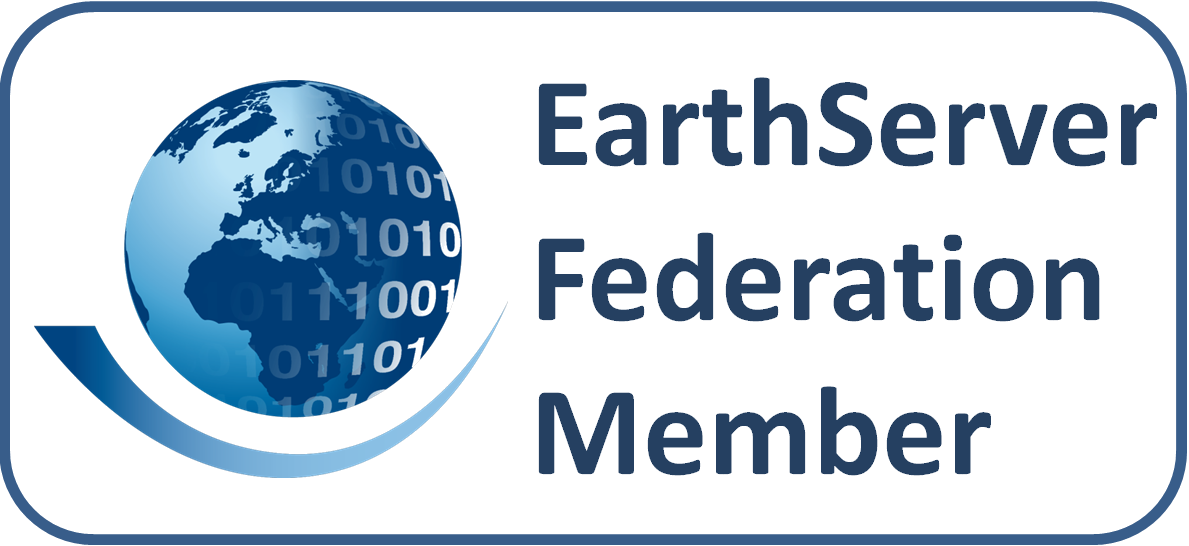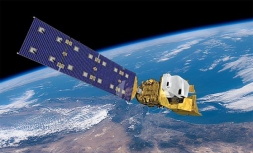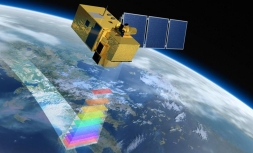IEEE GRSS EO Infrastructure
 The IEEE Geoscience and Remote Sensing Society (GRSS) is developing the next-generation EO infrastructure for the archival, curation, and sharing of open data and computational resources - for the membership, by the membership.
This task responds to the growing need for infrastructure support within the GRSS community, including TCs, Chapters, Global Activities, Industry. Further, it is a response to GRSS strategic direction SD1 EO Data and Compute Resources for Technical Development. Stakeholders of this infrastructure activity include GRSS (to address SD1, increase membership, contribute to outreach); TCs (common platform to leverage); GRSS members (centralized resources - links to publications, data, platform, code); general public (incentive to join, centralized repo and platform), Chapters (platform for sharing/using datasets and training). To start with, as agreed in the December 2021 AdCom, in 2022 existing cloud platforms and services should be explored and studied, among others.
The IEEE Geoscience and Remote Sensing Society (GRSS) is developing the next-generation EO infrastructure for the archival, curation, and sharing of open data and computational resources - for the membership, by the membership.
This task responds to the growing need for infrastructure support within the GRSS community, including TCs, Chapters, Global Activities, Industry. Further, it is a response to GRSS strategic direction SD1 EO Data and Compute Resources for Technical Development. Stakeholders of this infrastructure activity include GRSS (to address SD1, increase membership, contribute to outreach); TCs (common platform to leverage); GRSS members (centralized resources - links to publications, data, platform, code); general public (incentive to join, centralized repo and platform), Chapters (platform for sharing/using datasets and training). To start with, as agreed in the December 2021 AdCom, in 2022 existing cloud platforms and services should be explored and studied, among others.
IEEE GRSS EO Datacubes
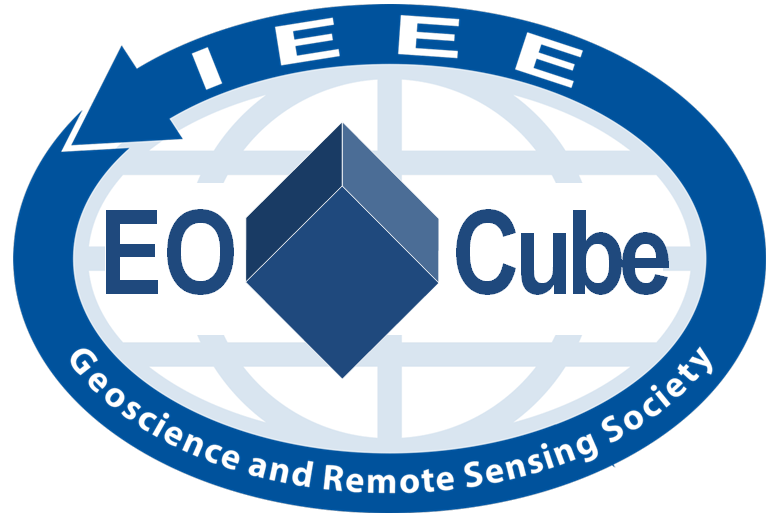 EO-Cube picks up on this request for action with a specific contribution
for evaluating and demonstrating the value of datacube management and analytics
as a key component of the GRSS EO infrastructure.
EO-Cube picks up on this request for action with a specific contribution
for evaluating and demonstrating the value of datacube management and analytics
as a key component of the GRSS EO infrastructure.
Datacubes provide a unified view on n-D raster data, such as 1-D sensor data, 2-D imagery, 3-D x/y/t image timeseries and x/y/z geophysical data, 4-D x/y/z/t atmospheric data, etc. – moving from a sensor-centric to a user-centric organization of data. Datacubes are an accepted corner-stone of analysis-ready data and well understood meantime, with established data and service standards in OGC, ISO, and EU INSPIRE; in fact, IEEE GRSS has played an important role in this standardization work.
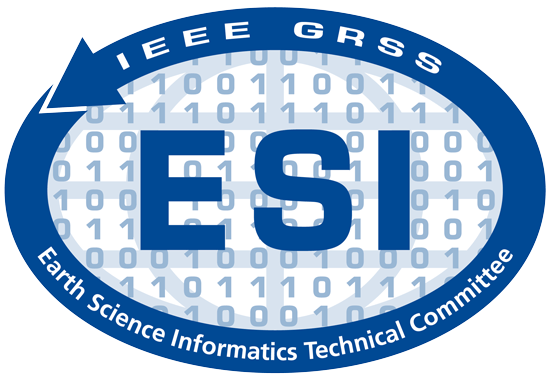 EO-Cube is a Strategic Initiative of IEEE GRSS implemented by the Earth Science Informatics (ESI) Technical Committee,
supported by IEEE GRSS Strategic Initiative funds which are gratefully acknowledged.
EO-Cube is a Strategic Initiative of IEEE GRSS implemented by the Earth Science Informatics (ESI) Technical Committee,
supported by IEEE GRSS Strategic Initiative funds which are gratefully acknowledged.
Technical Approach
 Following a staged approach, EO-Cube starts with a prototype service of a fully standards-based GRSS EO datacube infrastructure,
for seamless embedding into the overall GRSS infrastructure.
Following a staged approach, EO-Cube starts with a prototype service of a fully standards-based GRSS EO datacube infrastructure,
for seamless embedding into the overall GRSS infrastructure.
It makes use of state of the art array database technology with datacube query support, federation capabilities, and appropriate access control. A federation with existing Petascale EO datacube assets will enable completely location-transparent distributed datacube fusion. Further, current technology trends - such as from ISO and OGC with the forthcoming ARD and Datacube WGs - will be duly considered. By the end of the activity the service will be ready for seamless transition to sustained operation, initially operated in the AWS cloud, but can be moved or multiplied to any common cloud; the federation can also span heterogeneous clouds and heterogeneous hardware - tested from supercomputers to laptops to nanosats.
Location-Transparent Federation
In this federation, any query can be sent to any node, regardless which member node holds the data - this includes distributed data fusion. In practice, just send the query to any node you prefer - such as EO-Cube - and let the federation take care about generating an optimal distributed execution plan.
In the animation below, this principle is visualized. The OGC WCPS query on the left side,
designed by climate modelers, determines global heavy rainfall risk areas by combining precipitation and Landsat-8 data stored on different servers each:
one on CODE-DE, the German Copernicus hub,
the other one on Creodias, a component of the European Copernicus dataspace ecosystem.
Hitting Run Animation illustrates how the WCPS request gets submitted to the server chosen, CODE-DE or Creodias.
On the map the query path is drawn: from your location to the server picked, and onward to the other server for which a subquery is generated automatically.
The result is shown in NASA WorldWind - in both cases it is the same, illustrating the principle of location-transparent distributed data fusion.
EO-Cube Partners
Constructor University
 Peter Baumann
(co-chair, IEEE GRSS
Earth Science Informatics TC)
leads the
Large-Scale Scientific Information Systems Research Group
at Constructor University.
Our research has pioneered Array Databases, aiming at
flexible, scalable services on large, multi-dimensional arrays - commonly called datacubes -
such as spatio-temporal sensor, image, simulation output, and statistics data.
Peter Baumann
(co-chair, IEEE GRSS
Earth Science Informatics TC)
leads the
Large-Scale Scientific Information Systems Research Group
at Constructor University.
Our research has pioneered Array Databases, aiming at
flexible, scalable services on large, multi-dimensional arrays - commonly called datacubes -
such as spatio-temporal sensor, image, simulation output, and statistics data.
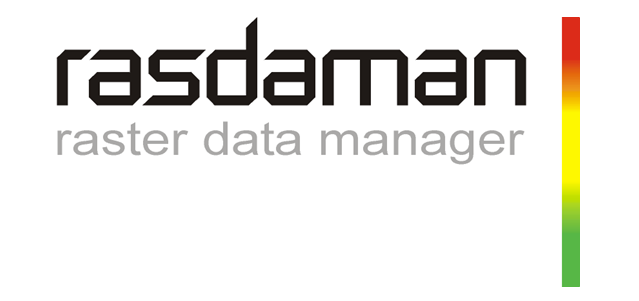 The rasdaman datacube engine is one main outcome of this research, available as free, open-source rasdaman community
and as rasdaman enterprise.
The rasdaman datacube engine is one main outcome of this research, available as free, open-source rasdaman community
and as rasdaman enterprise.
Tutorial on Datacube Analytics
Understand. Space. Time.
In standardization, coverages serve to model datacubes. ISO and OGC define the coverage data and service model. In this tutorial the concepts are introduced. Many clients actually support standards-based datacubes, such as the ones listed in the coverages sandbox.
Access the IEEE GRSS Datacubes
Easier, faster, more analysis-ready
With EO-Cube, currently in prototype stage, the IEEE GRSS Earth Science Informatics Technical Committee (ESI TC) is contributing a user and programming friendly, powerful, standards-based service constituting the next-generation EO infrastructure - for the membership, by the membership.
Shape the Service!
The service is under construction - and we are grateful for your input:
- What existing AWS data would you want to see added next as datacubes?
- Want to contribute own data for cubification?
- Find functionality missing?
- Want to join the initiative and get hands dirty?
If any of these apply, or you want to let us know of anything else: Contact the initiative lead, !
Visitors:
Terms of Reference
Responsible Maintainer
Constructor University Bremen gGmbH
c/o Peter Baumann
Campus Ring 12
28759 Bremen
Germany
Image Sources
Shutterstock; Adobe Stock; NASA; ESA; Constructor University.
Data Protection Regulation (GDPR)
The controller named above is subject to the Constructor University imprint.
When you visit our website, the Web server temporarily stores usage information on our server machine (located in Germany) for statistical purposes in the form of a log in order to improve the quality of our website and to protect it from misuse and attacks.
We do not transfer your personal data to third parties without your express consent. We use revolvermaps for determining the city of visitors (nothing beyond this anonymized information is available); see their privacy statement which, at the time we evaluated it, obviously was in accordance with GDPR.
When it comes to processing your personal data, the GDPR grants you certain rights as a website user:
- Right of Access (Art. 15 of the GDPR): You have the right to request confirmation as to whether personal data concerning you is being processed; where this is the case, you have a right of access to this personal data and to the information specified in Article 15 of the GDPR.
- Right to Rectification and Right to Erasure (Art. 16 and 17 of the GDPR): You have the right to immediately request the rectification of incorrect personal data concerning you and, if necessary, the completion of incomplete personal data. You also have the right to request that personal data concerning you be erased immediately if one of the reasons listed in Art. 17 of the GDPR applies in detail, e.g. if the data is no longer required for the purposes for which it was collected.
- Right to Restriction of Processing (Art. 18 of the GDPR): You have the right to request a restriction of processing for the duration of a review if any of the conditions specified in Art. 18 of the GDPR have been met, e.g. if you have lodged an objection to the processing.
- Right to Data Portability (Art. 20 of the GDPR): In certain cases (which are outlined in detail in Article 20 of the GDPR), you have the right to obtain from us your personal data in a structured, standard, machine-readable format or to request the transfer of such data to a third party.
- Right to Object (Art. 21 of the GDPR): If data is collected on the basis of Art. 6(1)(f) of the GDPR (data processing on the grounds of legitimate interests), you have the right to object to the processing at any time for reasons arising from your particular situation. If you make such an objection, we will no longer process your personal data unless we can demonstrate compelling legitimate grounds for the processing which override your interests, rights, and freedoms or for the establishment, exercise, or defense of legal claims.
- Right to Lodge a Complaint with a Supervisory Authority In accordance with Art. 77 of the GDPR, you have the right to lodge a complaint with a supervisory authority if you believe that the processing of your personal data violates data protection regulations. This right to lodge a complaint may particularly be exercised before a supervisory authority in the EU member state where you reside, work, or where you suspect that your rights have been infringed.
